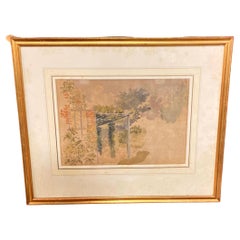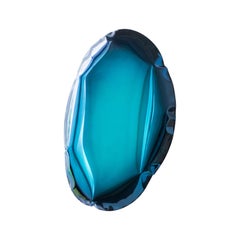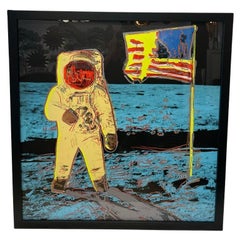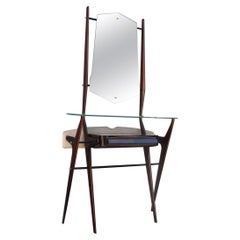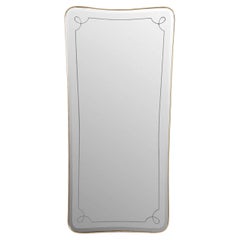Glass Decorative Art
Late 19th Century English Late Victorian Antique Glass Decorative Art
Gesso, Glass, Wood, Paper
21st Century and Contemporary Polish Organic Modern Glass Decorative Art
Stainless Steel
Mid-20th Century Glass Decorative Art
Art Glass
1950s Italian Mid-Century Modern Vintage Glass Decorative Art
Brass
Early 20th Century French Art Deco Glass Decorative Art
Metal, Brass
1970s French Vintage Glass Decorative Art
Glass, Oak, Paper
1960s Czech Mid-Century Modern Vintage Glass Decorative Art
Straw, Glass, Wood
21st Century and Contemporary Polish Minimalist Glass Decorative Art
Stainless Steel
20th Century American Art Deco Glass Decorative Art
Glass, Paper
21st Century and Contemporary Polish Minimalist Glass Decorative Art
Stainless Steel
19th Century French Antique Glass Decorative Art
Paper, Glass, Wood
1980s American Modern Vintage Glass Decorative Art
Glass, Wood, Paper
Mid-19th Century Italian Rococo Revival Antique Glass Decorative Art
Metal
Early 1900s English Art Nouveau Antique Glass Decorative Art
Stained Glass
20th Century Glass Decorative Art
Glass
Mid-18th Century French French Provincial Antique Glass Decorative Art
Brass, Bronze
20th Century French Mid-Century Modern Glass Decorative Art
Ceramic, Glass
1910s French Art Deco Vintage Glass Decorative Art
Glass, Wood
1890s French Country Antique Glass Decorative Art
Iron
1860s German Biedermeier Antique Glass Decorative Art
Glass, Wood
21st Century and Contemporary Polish Organic Modern Glass Decorative Art
Stainless Steel
Mid-19th Century French Regency Antique Glass Decorative Art
Mirror, Wood
1980s Italian Mid-Century Modern Vintage Glass Decorative Art
Murano Glass
1980s American Native American Vintage Glass Decorative Art
Glass, Wood, Paint
1890s German Folk Art Antique Glass Decorative Art
Glass, Wood
1960s American Classical Vintage Glass Decorative Art
Glass, Wood, Paper
1950s French Vintage Glass Decorative Art
Glass
Mid-19th Century French Gothic Antique Glass Decorative Art
Glass, Wood, Paper, Oak, Ash
Mid-20th Century Italian Romantic Glass Decorative Art
Metal
20th Century French Gothic Revival Glass Decorative Art
Stained Glass
Mid-20th Century German Mid-Century Modern Glass Decorative Art
Metal
21st Century and Contemporary French Glass Decorative Art
Glass
Early 19th Century English Early Victorian Antique Glass Decorative Art
Glass, Wood, Paper
Mid-20th Century European Neoclassical Glass Decorative Art
Brass, Gold
1930s Japanese Art Deco Vintage Glass Decorative Art
Cotton, Silk, Glass
Early 20th Century French Art Deco Glass Decorative Art
Brass
Late 20th Century Chinese Mid-Century Modern Glass Decorative Art
Silk, Glass, Wood
1990s American American Classical Glass Decorative Art
Glass, Wood, Paper
21st Century and Contemporary Polish Minimalist Glass Decorative Art
Stainless Steel
Mid-20th Century Italian Hollywood Regency Glass Decorative Art
Crystal, Brass
1980s Native American Vintage Glass Decorative Art
Paper, Glass, Wood
21st Century and Contemporary Italian Modern Glass Decorative Art
Brass
Mid-20th Century American Mid-Century Modern Glass Decorative Art
Stained Glass, Oak
Mid-20th Century Japanese Art Deco Glass Decorative Art
Glass
18th Century Italian Rococo Antique Glass Decorative Art
Gold Leaf
1910s English Arts and Crafts Vintage Glass Decorative Art
Stained Glass
19th Century Victorian Antique Glass Decorative Art
Lava
19th Century French Louis XVI Antique Glass Decorative Art
Glass, Giltwood
Early 20th Century Chinese Art Deco Glass Decorative Art
Bronze
1980s Post-Modern Vintage Glass Decorative Art
Natural Fiber, Glass, Wood
21st Century and Contemporary Italian Modern Glass Decorative Art
Art Glass
2010s Mexican Other Glass Decorative Art
Glass
Mid-19th Century British Antique Glass Decorative Art
Shell, Blown Glass, Giltwood
Late 18th Century English Tudor Antique Glass Decorative Art
Silk, Thread, Glass, Giltwood
1930s Portuguese Art Nouveau Vintage Glass Decorative Art
Glass
Early 20th Century Italian Bohemian Glass Decorative Art
Glass, Wood
21st Century and Contemporary Italian Modern Glass Decorative Art
Silk, Glass, Mirror
19th Century Chinese Antique Glass Decorative Art
Mirror, Wood
1950s French Mid-Century Modern Vintage Glass Decorative Art
Metal, Brass
Mid-20th Century French Art Deco Glass Decorative Art
Glass
Read More
At Colonial Williamsburg, Everything Old Is New Again
With the help of a new director, the Virginia institution's folk art and decorative arts museums are undergoing extensive upgrades.
New York’s Hirschl & Adler Showcases the American Workmanship and Design Panache of Neoclassical Treasures
The gallery's latest exhibition proves that museum-quality pieces entice and inspire, whether in traditional or more modern interiors.
